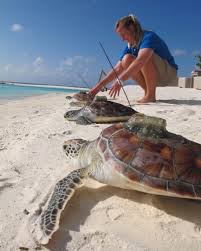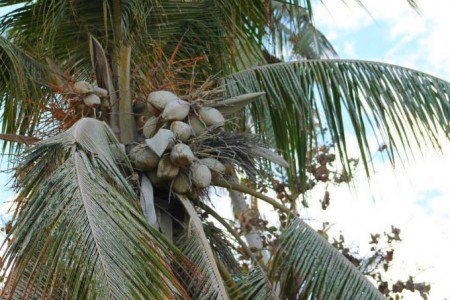The Ministry of Environment has decided that an illegally trafficked slow loris – a species recognised as ‘vulnerable’ on the IUCN red list – will be euthanised.
“After running out of other options, the ministry sees euthanasia as the only option available,” stated Assistant Director for the Environment Department Ilham Atho Mohamed.
“This decision does not affect the wild population or the conservation potential of the species. It will also help prevent further illegal trade of such species and prevent the specimen from re-entering illegal trade,” she contended.
The slow loris was discovered by police in a January drugs raid in the capital Malé, along with more than MVR300,000 in cash.
“In the capacity of the Management Authority of the Convention of International Trade in Endangered Species of Wild Fauna and Flora (CITES) in Maldives, we have already explored all options and have come to a decision from the Ministry’s side,” Ilham told Minivan News today.
According to Ilham, there were three possible options when dealing with the animal – keeping it in captivity, returning it to the wild, or having the animal put down.
She explained that these are the three options given in accordance with the CITES resolution on ‘Disposal of confiscated live specimens of species’ which she noted was in line with international best practice.
The first option of captivity was not available in the Maldives, she noted, with no rescue centres, humane societies, or relevant university facilities.
As the CITES resolution details a number of other obstacles to keeping the creature in captivity in the Maldives, Ilham explained that the ministry had attempted to find a home for the slow loris elsewhere.
“Through the World Association of Zoos and Aquariums an announcement was made and two parties showed interest. One from the Czech Republic and other from Brazil,” though Ilham explained that the interested parties in Brazil had not responded after initial enquiries.
Issues soon arose with the transfer to the Czech Republic, however, as the import of the animal could not be approved as it is not in accordance with World Organisation for Animal Health.
Furthermore, flights landing in Maldives are neither willing to take the animal, nor do they meet with the IATA Live Animal Regulations. Alternatively, sea transport proved prohibitively expensive.
The second option of returning the animal to the wild was not available in the Maldives, stated Ilham, as the Maldives does not have the wild habitat of the slow loris.
“For countries that do not have the above two options this [euthanasia] is the only option and the least expensive one.”
“The resolution mentioned above also states ‘it cannot be overstressed that euthanasia may frequently be the simplest and most humane option available’ and gives several clear advantages,” she explained.
Unnatural habitat
Following the discovery of the a number of exotic and illegal animals by police this year, the government has moved to step up customs security, in an effort to stem the flow of illegal animals being trafficked into the Maldives.
“We have instructed cargo checks and consider giving more attention to these, and will report any findings,” said Senior Superintendant of Customs Ahmed Niyaz, adding that customs were working closely with the police.
Any dangerous animals that are confiscated are handed over to the police, he said, adding that “if an animal is protected under convention they will inform the Ministry of Environment. They will then check with international bodies.”
In the majority of cases the dangerous animals will then be sent to other countries, due to insufficient space or expertise in Malé, he explained.
Aside from those trafficked, non-native species such as crocodiles have also found themselves in the Maldives, resulting in dilemmas regarding the appropriate way to handle these unusual arrivals.
In 1998, a small crocodile – or kimboo in Dhivehi – was found off the coast of a local island. The animal was brought back to the Malé and placed in a small cage as a central park attraction, where it remains to this day.
Kimboo occasionally makes it into local media and even has his own Facebook page calling for his release from his now-cramped quarters, which the World Society for the Protection of Animals has called “entirely inadequate”
Similar to the slow loris, attempts to have the crocodile relocated to have yet to produce results, with financial and legal obstacles barring kimboo’s path out of the country.
The discovery of two more crocodiles in early 2011 raised serious concerns around the containment and treatment of animals in the Maldives.
 (0)Dislikes
(0)Dislikes (0)
(0)
